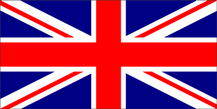La Val Lemina in Inglese

_______________________________________________________________________
THE VAL LEMINA
_______________________________________________________________________________________________________________________________________________
The Val Lemina lies to the South-West of Turin. On a side, it is surrounded by the vast subalpine plain dotted with villages, on the other side you can see the Marittime Alps and to the West-South-West you can see the Cozie Alps on which Monviso rises.
Looking at backwards you can enjoy the sightseeing of green hills and the Prealps.
Its altitude is 450 mt. and its climate is mild.
The chief village of the valley is S. Pietro Val Lemina. It takes its name from the Lemina Stream which sources from Mount Fai (1386 mt.); some other hamlets as Dairini, Saretto, Gili, Marendoira, Ribetti, Rostagnera, San Bernardo, Giorsatera, Chiambairone, Sarea, Ser, Rineugna, Ardit, D, Alborea, Ciabot and Cr are a frame to that soft and strong scenary.
1400 persons live in S. Pietro V.L. The country is linked up with Pinerolo by a provincial road 3,5 Km. long.
Some roads lead off San Pietro V.L. towards the nearest hamlets; the most important of these ones is a scenic road (4 Km. long) which leads to Pramartino (1000 mt. height). Costagrande and Talucco, situated on the left side of the stream, are hamlets of the neighbouring district of Pinerolo. The hamlets set on the right side of the stream belong to S. Pietro district.
_______________________________________________________________________________________________________________________________________________
SOME HISTORICAL HINTS
S. Pietro V.L. has been known since 1064, becouse it was one of the countries mentioned in the deed of gift signed by Adelaide in Susa to S. Maria Abbey in Pinerolo. In 1693, during the offensive of Vittorio Amedeo against Pinerolo, an important battle was fought.
In more recent times, the strong towns planning expansion, in the sixties and the birth of small industries at the bottom of the valley, contributed to turn San Pietro from a small country hamlet into a residential district, causing the progressive depopulation of Talucco and other small countries.
This situation, naturally, favoured the residential development in the valley, but caused also a severe reduction of an agricultural activity along the course of the stream.
_______________________________________________________________________________________________________________________________________________
FLORA AND FAUNA
In the lower part of the Valley, vegetation consists of poplar groves and robinia woods. As you climb the hill, chestnuttrees are in outnumber as for as the woods near Talucco. Further on, these trees begin to be mixed with beeches, Scotch pines birches, Norway spruces and larches.
In regard to mammals of big size, Fauna consists of foxes and wild boars; wild boars are so in outnumber to be easily seen near the hamlets or even along the roads where people walk.
In regard to smaller animals, sguirrels, hares, beeches-marten, weasels, dormice and moles are numerous enough, and unfortunately badgers may be rarely seen.
The birds of prey, night-birds or day-birds are noumerous. Hanks, buzzards, kestrels, owls and barn owls fly in the woods where, on the contrary, eagle-owls are quite missing.
The reptiles, which may be found in woods, in summy lawns or along streams are vipers, colubers, and ring-snakes. In moist places and in the woods, in raing days, it isn't unusual to see a spotted salamander which lives in stream-pools where it lays eggs as frog and toads do.
Insects are in great deal, but the most important are butterflies, stag-beetles and golden beetles.
_______________________________________________________________________________________________________________________________________________
SQUARES AND MONUMENTS
In San Pietro Val Lemina there are three aquares. In Resistenza Square there is a War Memorial created in 1968 by Gioachino Chiesa from Bra and in front of it there is the Town Hall.
In Piemonte Square there is a monument to "the Piedmontese in the world" dedicated to all the emigrant fellow-countrymen spread in the farthest countries in the world, and there is a cippus which commemorates a brotherhood meeting between Alpine and Navy Armies.
The third is the small Market square in which, some time back, an open-air market full of fruits, vegetables and clothes took place, once a week.
_______________________________________________________________________________________________________________________________________________
ART
The Parish Church, consacrated to S. Peter and S. Paul, is a magnificent and severe baroque late eighteeth century building.
It is a Curch with a nave and two side aisles. The aisles on the left is larger.
In the nave there are three medallions showing S. Bernardo surrounded by angels; Madonna treading on the snake and Jesus stopping S. Peter on leaving Rome.
Over the choir there is a painting by an unknown painter, showing Our Lady of the Assumption. On the right side of the High Altar there is a painting showing Our Lady and the Child and on the left side another one chowing the Last Supper, both made by Baretta, a contemporary well known painter.
Around Our Lady are painted five Saints, patron Saints of the Parish whom five rural chapels are dedicated to. The Chapels of Saint Bernardo, Saint Giovanni and Saint Rocco are along the road leading to Talucco. Saint Grato Chapel is on the road towards Pra Martino, Saint Defendente Chapel is on the road to Costagrande.
_______________________________________________________________________________________________________________________________________________
TOURIST ATTRACTIONS
Martinat Ornithological Park has spread out about 80.000 square metres on the hill within the borders of the two Municipal districts: Pinerolo and San Pietro V.L..
Doctor Martinat preferred this area because its climate is extraordinarly favourable and well-swited to his purpose. He stated to set his exotic-birds collection, the biggest in the world, in this area. The Collection consists of over 2.000 specimens, half of them are parrots, very rare nowadays.
The main purpose of the Park is to be a breeding and preserving ground for species in serious danger of extinction. Very large aviaries were built for the purpose; the largest one in the world (13.000 s.m.) includes seven pools crowded with ducks, geese, flamingoes, cranes, ibises, storks, all wild animals able to fly and live as if they were free.
Another smaller aviary (5.000 s.m.), the fourth in the worls, allows people to watch birds while flying: they are pelicans, cranes, bustards and different species of storks.
Hundreds of big parrots live and fly in particular aviaries, thirty metres long. They are, as well, hundreds of smaller aviaries used for breeding and large pens. The presence of two big tortoies by Seichelles is very important. The male, horn in 1860, weighs 156 Kg; the female weighs only one quintal.
The sightseeing tour around the five Chapels, in a wonderful country full of peace and stillness, is an intelligent way to escape from a noisy town to rest in a silent place where nature is uncontaminated.
Practice wall for Rocca SBARUA climbing with MELANO C.A.I. refuge.
_______________________________________________________________________________________________________________________________________________
TYPICAL PRODUCTS:
CHEESE "TOMINI" MUSHROOMS HONEY
Related home page
_______________________________________________________________________________________________________________________________________________
SERVICES OF PUBLIC UTILITY
POLICE IN PINEROLO
POST AND TELEGRAPH
TOWN HALL
BUSES TO AND FROM TORINO AND PINEROLO
Related home page
_______________________________________________________________________________________________________________________________________________
NEWS taken from:
- Outlines of "Pinerolo History" written by Antonio F. Parisi.
- "To know Piedmont" by Carla Torre Navone-Carlenrico Navone.
- "Lemina and Chisone Valleys" by Vittorio Avondo e Franco Bellion.
- Project on "My country" written by the fourth class pupils of the Elementary School in S. Pietro V.L. (1990-1991).
_______________________________________________________________________________________________________________________________________________
Translation by dr. Tarolla

